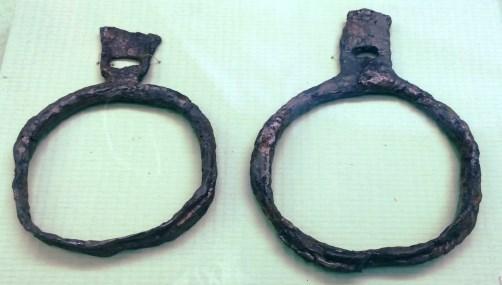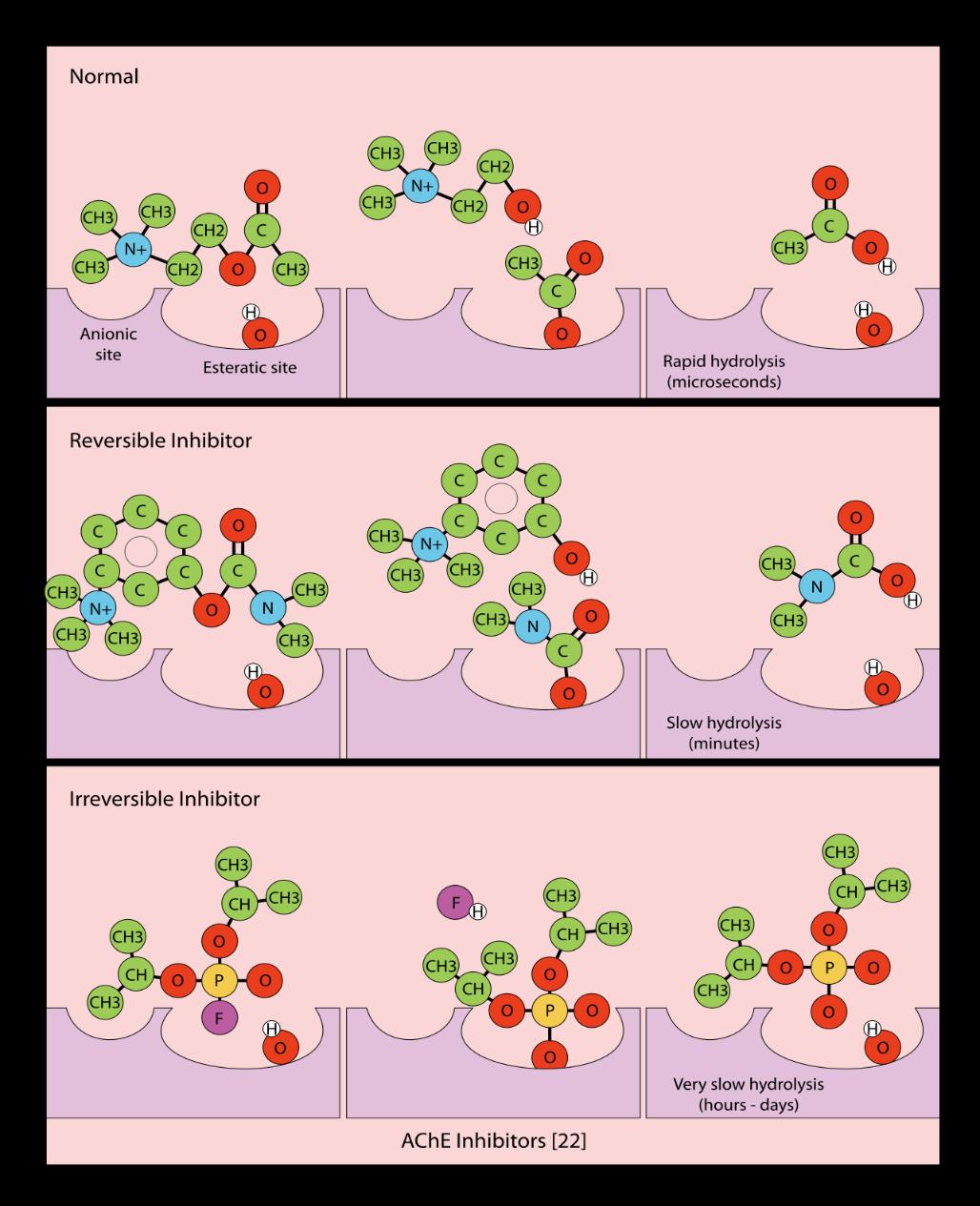
5 minute read
Nerve Agents and their Role in War
By Mr Simkin
At 16:15, on an unassuming March 3rd 2018, a caller to emergency services reported two individuals unconscious on a park bench in the centre of Salisbury; an eyewitness saw the woman, later identified as Yulia Skripal, foaming at the mouth, and the man, Sergei Skripal, drifting in and out of consciousness, his eyes as glazed as the overcast sky above him.
Advertisement
Both Yulia and Sergei had been victims of an attempted assassination using a ‘Novichok’ nerve agent. These chemical weapons were developed by the Soviet Union between the 1970s-1990s to be undetectable by NATO scientists and defeat their protective equipment. To understand what causes these nerve agents to be so toxic, we will explore a molecular narrative. We will start with the moment the chemical agent was applied to the Skripals’ front door, its absorption via their respiratory system and subsequent distribution around their bodies, and how this simple collection of atoms nearly killed them.
It started with two Russian ‘tourists’, Alexander Petrov and Ruslan Boshirov, purportedly in Salisbury to visit the cathedral and its “famous 123 metre spire”. However, they had another item on their touristic agenda: visiting the Skripals’ home to apply the nerve agent to their front door. This had been transported in a perfume bottle in order to evade airport security, and forensic analysis of the scene would later determine that the highest concentration of this nerve agent was on the door. The chemical structures of these agents are disputed, and forensic analysis of them is classified, making it difficult to describe their exact chemical makeup. However, these agents can be broadly classified as “organophosphate acetylcholinesterase inhibitors”. In simple terms, the “organo” part of the name refers to the organic backbone (marked as a green *) and the “phosphate” part of the name refers to the core phosphorous atom (the “P” in the red circle in the image below). A key fluorine (“F”) atom is present in most of these agents and plays a key role in knocking out or “inhibiting” the “acetylcholinesterase” (AChE) enzyme, hence “acetylcholinesterase inhibitor”.
Figure 1. Two structures claimed to be ‘Novichok agents’ classified as “organophosphate acetylcholinesterase inhibitors”. The red ring represents the “phosphate” group, the F atom is essential in knocking out the acetylcholinesterase inhibitor, and the parts with the asterixis represent the “organo” framework.

The nerve agent is delivered to a surface either as an ‘ultra-fine powder’ or a vapour capable of being inhaled. Upon inhalation, the agent will make its way through the victim’s respiratory system and be absorbed into their bloodstream. It is then indiscriminately distributed across the body. However, its toxicity arises from it targeting a specific set of cells: the muscles. Once here, it finds its way to the junction between the nerve cells and muscle fibres (the neuromuscular junction, see figure 2). It is here that these agents wreak neurological mayhem.
We take for granted the spontaneity of muscle contraction: as I write this article, nerve cells are instantaneously firing electrical signals, travelling at speeds of up to 30 metres per second, from my brain to the muscles in my forearms and hands. During the contraction process, acetylcholine is released from the end of nerve cells transmitting these signals to muscle cells, directing them to contract.
forming ace c acid and choline. The anionic site is nega vely charged, holding the posi vely charged acetylcholine molecule,orien ngitinspacesoitcanbebrokendownmore acetylcholinewhichleadstoacascadeof events causing muscle

In order for regulated messaging between nerve and muscle cells, an enzyme, acetylcholinesterase, needs to break down the acetylcholine in order for the signal to stop. This deactivation is essential because if the acetylcholine remained bound to its receptor, the receiver of the signal, continuous activation would cause paralysis as your muscles would not stop contracting, this is what causes the acute symptoms of Novichok poisoning: involuntary contraction of all skeletal muscles leads to paralysis; and dysregulation of the heart and diaphragm muscles leads to respiratory and cardiac arrest, with death following imminently. Understanding how Novichok agents knock out the acetylcholinesterase (AChE) enzyme helps us understand how to design antidotes that prevent victims from dying. The enzyme AChE is remarkable: it is one of the fastest working enzymes in the natural world, one enzyme breaks down approximately 25,000 molecules of acetylcholine per second, approaching the limit allowed by the rate of acetylcholine diffusion. Put simply, it could not work any faster. The enzyme’s rapid work rate is necessary for effective and transient communication between your motor neurones and muscles. AChE possesses two structural features that contribute to its catalytic ability, an esteratic site and a separate anionic site (figure 3). Novichok agents broadly mimic the structure of acetylcholine, duping AChE into thinking it’s an acetylcholine molecule. However, the enzyme cannot break it down nor can it leave the active site as it binds irreversibly to the enzyme (see figure 4). Such is the potency of these nerve agents the process of breakdown occurs only after hours or days, long after the victim has died. This potency comes down to the “F” atom. For those interested in the specific chemistry behind the inhibition of AChE, there is a reaction mechanism that explores the specific electronic events and molecular reorganisation that describes this process i.e., the breaking and making of new covalent bonds, in figure 5. Understanding how the agents interact chemically with the enzyme allows chemists to design antidotes to be administered upon suspected nerve agent poisoning. Pralidoxime is one such substance that reactivates AChE by breaking the bond between the nerve agent and the enzyme, allowing acetylcholine to be




During the Second Battle of Ypres, chlorine gas was used by axis powers. Gas would be used by both sides after this.

To conclude, the use of Novichok agents, and chemical nerve agents more generally, has significant implications for counterterrorism and security service operations. International cooperation has helped eliminate approximately 98% of declared chemical weapons stockpiles. However, it is probable these agents will continue to be used by rogue nations during their attempts to assassinate political opponents. The Skripals’ were part of an unfortunate club of organophosphate acetylcholinesterase inhibitor victims: Russian opposition leader Alexei Navalny and Kim Jong-un’s half-brother, Kim Jong-nam, are just a few other significant members. The Novichok molecular narrative also serves to demonstrate that with some basic understanding of chemistry and human biology, we can explain why these agents are so toxic, and more importantly, scientists can use this knowledge to design treatments to prevent more victims from dying in the future.
IGCSE/A-level glossary of key words:
Enzyme: A biological catalyst i.e., a protein that increases the rate of a chemical reaction in the body. They are used to perform chemical reactions such as the breakdown of complex carbohydrates (e.g. starch into glucose). The “active site” is the location in the protein where this chemical reaction takes place.
Inhibitor: A substance that “inhibits” i.e. stops an enzyme from working. It can do this in several ways: competitive inhibition occurs when the inhibitor molecules take the place of the substrate and “competes” for the active site; a non-competitive inhibitor bind to an enzyme away from the active site, altering the shape of the active site, preventing substrate from binding
Neurotransmitter: A substance that allows nerve cells to communicate with one another or to other tissues.
Acetylcholine: A specific neurotransmitter that allows nerve cells to communicate to muscle cells, amongst other tissues.
Acetylcholinesterase: An enzyme that breaks down the neurotransmitter, acetylcholine, into acetate and choline.
Synapse: The gap or “junction” between two nerve cells or a nerve cell. Impulses are transmitted between these gaps using neurotransmitters.
Neuron: A specialised cell that transmits electrical impulses across your nervous system. They are the fundamental units of the brain and nervous system. A motor neuron is a specific type of neuron that allow us to speak, move, swallow, and breathe by sending commands from the brain to the muscles.
Neuromuscular junction: The gap between the end of a motor neuron and the start of muscle tissue.
Figure 5. Suggested reac on mechanism describing how Novichok agents deac vate and irreversibly inhibit the acetylcholinesterase enzyme. “X” represents the “F” atom in the structures in figure 1. For those unfamiliar with the “curly arrows” used to represent how chemical reac ons occur, they simply show you the movement of pairs of electrons. Curly arrows move from a source of electrons to an acceptor - this movement causes the forma on and/or breaking of a covalent bond. The breaking and making of new bonds fully describe how reac ons between organic molecules take place.





